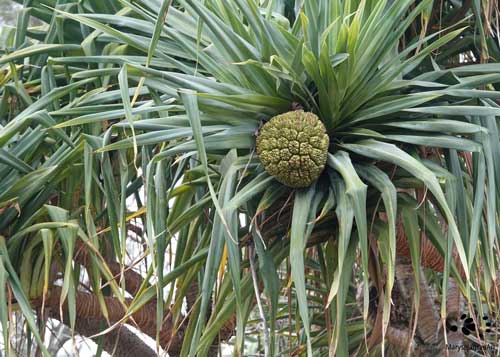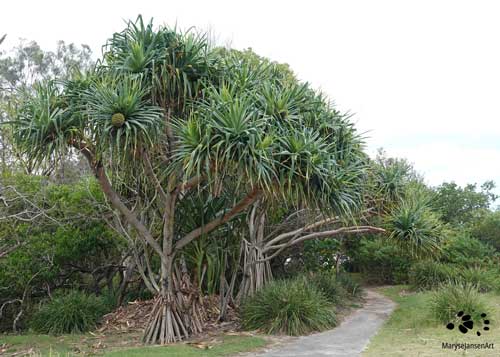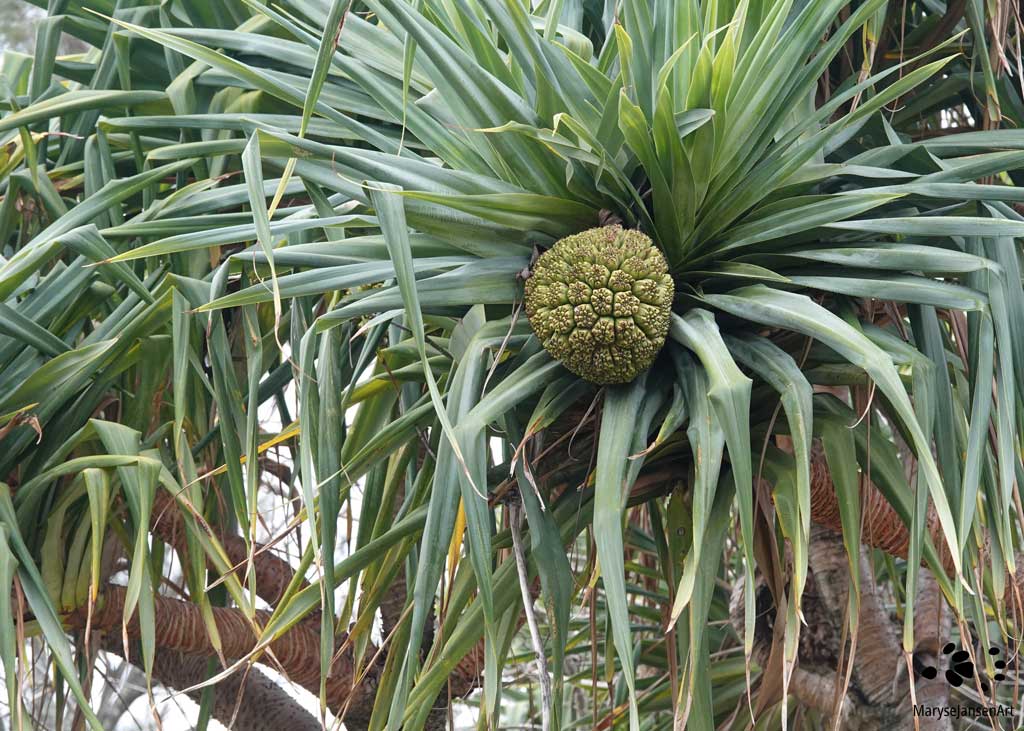Nature Photography with marysejansenart
Hardy tree withstands the elements

Table of Contents
Aerial Root System
One of the first things that I noticed when I arrived on the eastern Australian coast, were the Pandanus trees. These small trees grow on aerial roots, which was unlike anything I had ever seen at that point in time – except for Mangroves. The roots of the Pandanus tree are also known as prop roots. These roots provide support as they grow out of the branched stems and anchor the tree into sandy soils. It is truly a fascinating sight and characteristic for the coastal headlands and beaches on Australia’s east coast. They range from Port Macquarie all the way up to the tip of Cape York and the Torres Strait Islands.
While we were hanging out in the park next to the beach with other families with young children, these trees provided some welcome shade. It became clear that the multiple branched stems looked very inviting for the children to climb on. And while they did so, they discovered the interesting looking fruits that these trees bear.
Pandanus tectorius
Pandanus is actually a genus of more then 600 species world wide, of which 30 can be found in Australia. The specific species I am talking about in this post in Pandanus tectorius.
The tree can grow about as wide as it grows tall: 4-15 metres! Its serrated leaves are up to 1.5 metres long and around 6cm wide. They are arranged spirally at the end of the branches which looks a bit screw-like, which explains the common name Screw Pine.

Pandanus Trees are dioecious, this means there are male and female trees. Male trees produce small, fragrant flowers. They grow in clusters which are surrounded by special white leaves called bracts, which help attract pollinators to the small flowers. The flowers only last for a day, but will appear every two months!
The pollinators of the Pandanus Tree are mainly small insects, such as bees. The wind, that they are almost constantly exposed to, also plays an important role in pollination.
Female trees flower no more then three times a year. The female flowers grow into the large fruits that look a bit like pineapples. Pandanus is not closely related to the pineapple plant though.
Uses of the Pandanus Tree
As you can see in the featured image, the fruit is made up out of parts, usually referred to as ‘keys’. Each piece of fruit bears an average of 60 keys, but it can count up to 200 keys! They are heavy too: 7-15 kg! Each of the wedge-shaped keys have a green, fibrous husk which turns orange when ripe. Each key contains 1-8 seeds, usually 2. The keys can float and survive ocean currents for many months. This way the seeds can be transported to a new place to take hold and grow into a new tree.
The fruit and seeds make great bush tucker and are edible when cooked or roasted. The fruit is high in beta-carotene and can thus help vitamin A deficiency. Important note: always be careful when exploring bush tucker, if you are not sure what you are doing please include an expert. Getting it wrong can be dangerous!
The leaves are traditionally used by Indigenous People for weaving things such as baskets, mats and ropes, after being separated into strings.
Withstanding the elements
Here, on the coastal headlands, the Pandanus trees are dominating and it is a stunning sight! They are balancing on the slopes of the steep rocky outcrops. They sure need all those roots as the soft sandy soil doesn’t give them much to hang on to while they endure the battering winds.
They are also able to tolerate the salt water that they get sprayed with all the time. Add to that the fierce Australian sun, and you can see that these hardy trees really don’t mind being exposed to the elements. They are even known to withstand tropical storms!! Combine that with those strong root systems and it becomes obvious that they play a very important role in preventing coastal erosion in the tropical, sub-tropical and warm temperate areas where they grow. The only thing they don’t like is frost, so you won’t see them in the colder areas.
See the Pandanus Trees as you join me on my walk on the coastal headlands in the latest episode of ‘Come for a walk in the Australian Bush’:
If you are interested in purchasing a print of ‘Pandanus with Fruit’ or would like to see what the image looks like on the various merchandise products, please head to my shop.
For a post about another interesting tree, click here.


